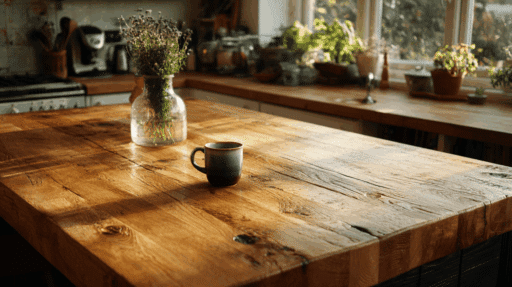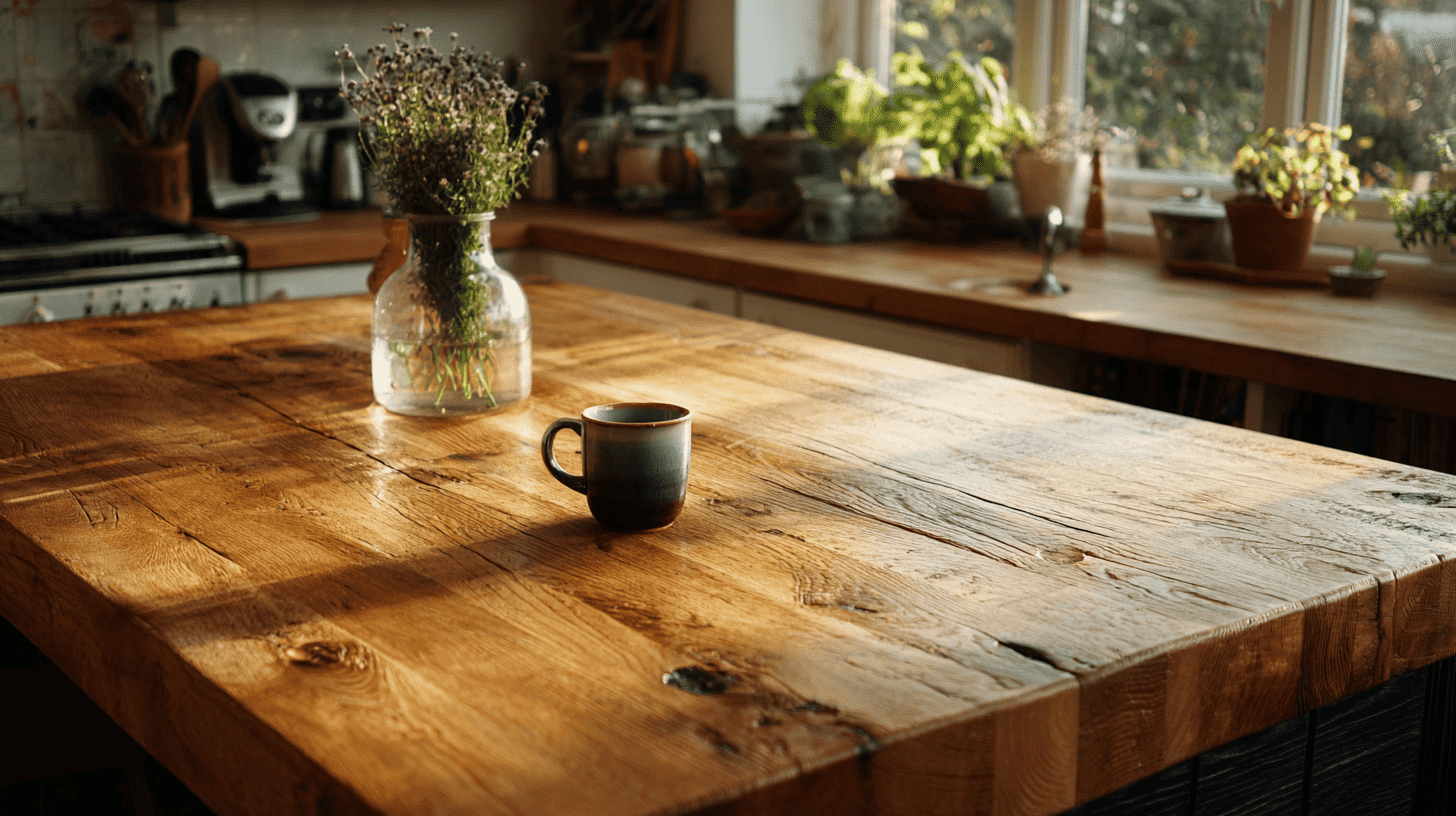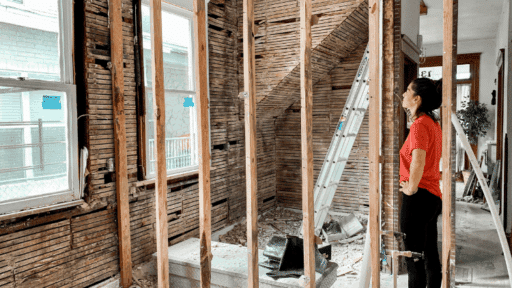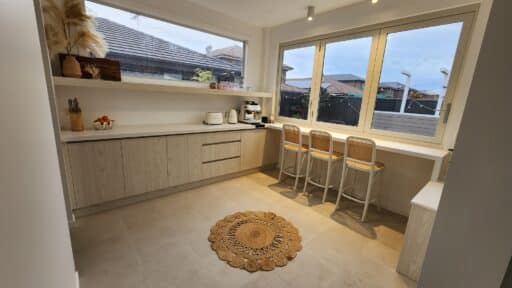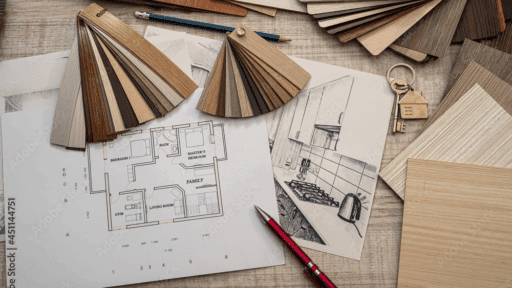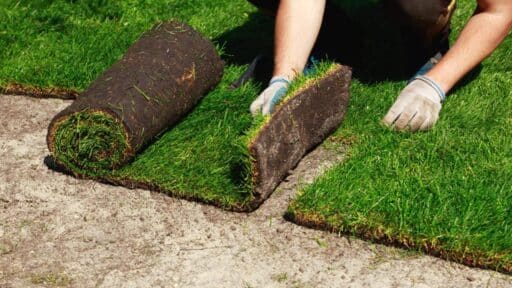Thinking about butcher block countertops for your kitchen? You’re not alone. Their natural warmth and inviting look make them a popular choice. But what’s it really like to live with them every day?
Do they hold up to spills, kids, and constant cooking? Are they worth the upkeep? If you’ve been scrolling through pretty photos but want the full story, this post is for you.
We’re breaking down the butcher block countertops’ pros and cons using honest reviews and hands-on experience. From beautiful aging to maintenance demands, you’ll get all the insights before making a decision.
So, are butcher block countertops charmingly practical or more work than they’re worth? Let’s find out together.
What Are Butcher Block Countertops?
Butcher block countertops are made by bonding together straight wooden boards into a thick, solid surface.
These boards are typically crafted from hardwoods like maple, oak, walnut, or cherry. The result is a smooth, natural surface that adds warmth and character to kitchens of all styles.
There are two main styles: edge grain (more affordable and common) and end grain (durable and visually textured, often used for cutting blocks).
Butcher block is prized for its soft, organic look, and it’s often chosen to create a cozy, lived-in feel.
Homeowners appreciate how well it adapts to different styles; it pairs just as well with farmhouse sinks as it does with modern cabinetry.
With proper care, butcher block can age gracefully and become even more charming over time.
Pros of Butcher Block Countertops
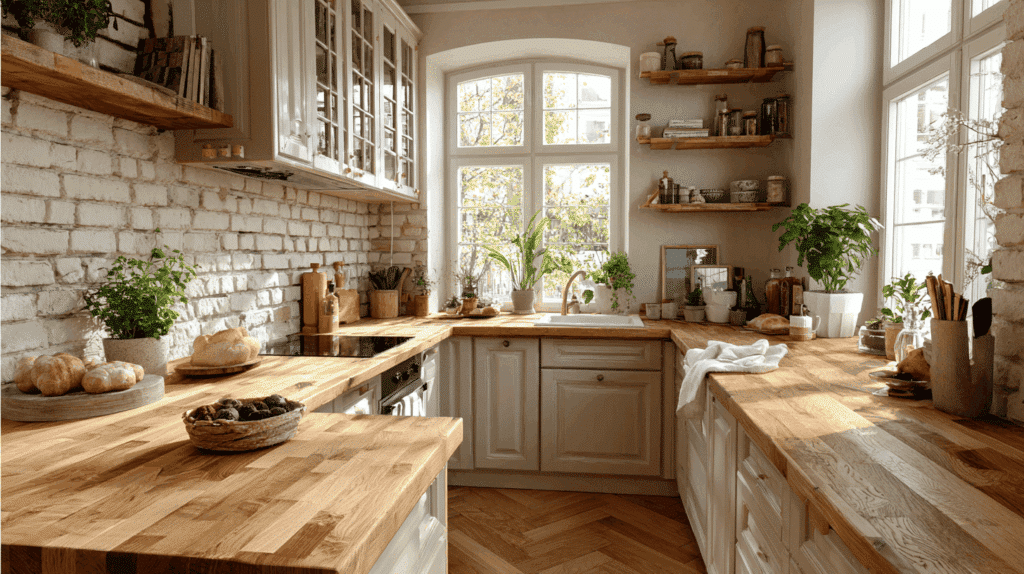
Wondering why butcher block is such a popular choice? Let’s break down the everyday benefits that make this material a favorite for practical and stylish kitchens.
1. Warm, Natural Appearance
There’s something comforting about the look of wood in a kitchen. Butcher block brings in warmth that stone just can’t match.
It pairs beautifully with whites, deep colors, or open shelving. Many users say their kitchen instantly felt more lived-in and welcoming after the switch.
2. Affordable Compared to Stone
One of the biggest draws is the cost. Butcher block is significantly cheaper than granite or quartz.
You can often install it yourself, which cuts down on labor expenses. It’s a solid choice for a budget-friendly remodel without giving up style or quality.
3. Easy to Work With and Repair
Small nicks or wear over time? No problem. This surface can be sanded down and resealed as needed.
Homeowners love that they can update the finish or fix marks without replacing the entire slab. It’s ideal for anyone who likes a hands-on approach.
4. Safe for Food Prep
Some homeowners use butcher block as a prep surface, especially when finished with food-safe oils.
It can be used for chopping or dough rolling, though most still prefer a cutting board. Maple and walnut are known for their natural antibacterial qualities.
Cons of Butcher Block Countertops
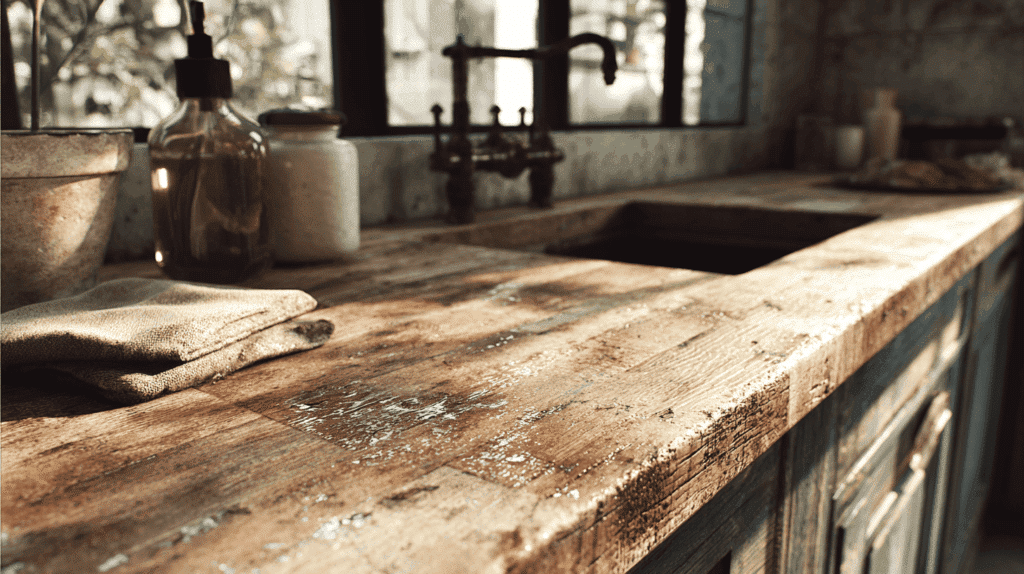
As beautiful as butcher block looks, it’s not without its challenges. Here’s what real users have pointed out as the downsides of butcher block and what to expect before you commit.
1. High Maintenance Required
Butcher block needs regular attention to stay in top shape.
You’ll need to oil it every few weeks at first, then less frequently over time. Skipping maintenance leads to dullness, dryness, and possible cracking. Some users admit the upkeep can become tiring.
2. Vulnerable to Water Damage
Wood and water don’t always mix. If the surface isn’t sealed properly, it may absorb moisture.
This leads to swelling, stains, or mold beneath the surface. Areas around the sink are especially risky. One user shared how a leaky faucet ruined their countertop in just months.
3. Scratches and Dents Easily
Wood is softer than stone, so it’s more prone to daily wear.
Dropped pans or a stray knife can leave marks. Parents with young kids or those who cook often may notice dents quickly. Some call it “character,” while others find it frustrating to manage.
4. Color Changes Over Time
Butcher block darkens naturally as it ages. Exposure to sunlight or oils can also alter the look.
Some homeowners love this lived-in quality. Others are surprised when it looks pretty different from the original. Keep this in mind if you prefer a consistent finish.
What Homeowners Are Saying: Butcher Block Countertop Reviews
Homeowners often choose butcher block for its warm, natural look and budget-friendly appeal. Many appreciate how easy it is to install or refinish on their own.
One reviewer on a popular home forum shared,
“Our butcher block island transformed the whole space. It’s beautiful and functional, but yes—maintenance is key.”
Another homeowner mentioned loving the feel of the wood for baking and prep work, but admitted that forgetting to oil it led to dryness and minor cracking.
A few users noted disappointment after placing a butcher block near a sink without proper sealing, leading to stains and swelling.
The overall takeaway? People who commit to routine care are often the most satisfied. They enjoy the look, feel, and aging of the surface when they know what to expect and stay ahead of wear.
Butcher Block vs. Other Countertop Materials
Wondering how butcher block stacks up against granite, quartz, or laminate? Each material has its own strengths, so choosing the right one comes down to your priorities: cost, durability, maintenance, or appearance.
Here’s a simple side-by-side comparison to help you see the difference:
| FEATURE | BUTCHER BLOCK | GRANITE | QUARTZ | LAMINATE |
|---|---|---|---|---|
| Appearance | Warm, natural | Polished, varied | Sleek, uniform | Simple |
| Maintenance | High | Low–Moderate | Low | Very low |
| Durability | Moderate | Very high | Very high | Low |
| Cost (per sq. ft.) | $40–$70 | $60–$100+ | $70–$120+ | $20–$50 |
| DIY Friendly | Yes | No | No | Yes |
Each option has its place. Butcher block works best in kitchens where warmth and hands-on care are part of the lifestyle. If durability or low maintenance is more important, another surface may be a better match.
Final Thoughts
Wondering if butcher block is the right choice for your kitchen? Start by thinking about how you use your space. Do you wipe spills as they happen? Are you open to a little routine care like oiling and cleaning?
This surface suits those who appreciate natural textures and don’t mind a bit of hands-on upkeep. It’s not completely effortless, but many people find the charm and warmth well worth the effort.
If you like materials that change with time and develop character, butcher block might be a good fit for your home.
Still unsure? Try it on a small island or side counter first. It’s a simple way to see how it feels in your everyday routine.
Have you used butcher block countertops? Share your thoughts or tips in the comments below!
Frequently Asked Questions
What Is the Cost of Butcher Block Countertops Compared to Quartz?
Butcher block countertops are usually more affordable than quartz. On average, butcher block can cost $40–$100 per square foot, while quartz ranges from $70–$150.
Are Butcher Block Countertops High Maintenance?
Yes, butcher block countertops need regular care. They require oiling every few months and quick cleanup after spills to prevent staining and warping.
What Is the Best Wood for a Butcher Block Countertop?
Popular choices include maple, oak, walnut, and cherry. Maple is durable and light in color, while walnut offers a rich, dark look.

